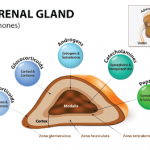“And they also looked at things that have been highlighted by the U.S. Food & Drug Administration in the past few years, reporting on patient well-being. Patients’ appetites increased, and they had a sense of feeling well,” says Dr. Bucala. He notes that the researchers also performed a synovial biopsy after treatment, which showed reduced inflammation. “I think it speaks to their thoughtfulness and insight.”
Dr. Bucala also remarks on the use of longitudinal studies in some of the patients, in whom they first administered a control substance (cholesterol) followed by compound E, and in whom they tracked the sedimentation rate after decreasing the dose of compound E. “Basically, they used the patient as their own control, which is elegant to do today,” says Dr. Bucala. “It’s what we would now call a crossover study, where patients who first get the placebo then get the drug, and you see if there is a change.”

Dr. Burns
Dr. Burns agrees that although parts of the report are written more colloquially than would be done now, it does have some sophisticated aspects now considered essential for clinical trials.
“They did a washout period where [Dr. Hench] had patients stop their other medicines for a while before he gave them compound E,” says Dr. Burns. He also notes that the researchers used at least some blinding for the people administering compound E or the placebo injections, although this is not described in detail. “And they tried to take into account the placebo effect—also accounting for how rest and usual hospital care alone may improve the patient’s condition.”
Side Effects & Dose Response
Drs. Hench and Kendall also described some of the side effects seen in their patients: acne, mild hirsutism, facial rounding, fluid retention, weight gain, difficulty sleeping and euphoria. “They describe pretty accurately what everybody nowadays knows as the side effects of steroids,” notes Dr. Burns. “It’s interesting to think they are really the first people who saw them, and they are describing them so accurately. It’s pretty amazing how astute they were, even in a small number of patients.”
Partly to try to minimize such symptoms, Dr. Hench and colleagues experimented with lowering the dose of compound E. In the process, they describe a dose response. They tried decreasing the daily dose to 75 mg, 50 mg or even 25 mg, but patients flared, and their sedimentation rates rose in response. They wrote,

